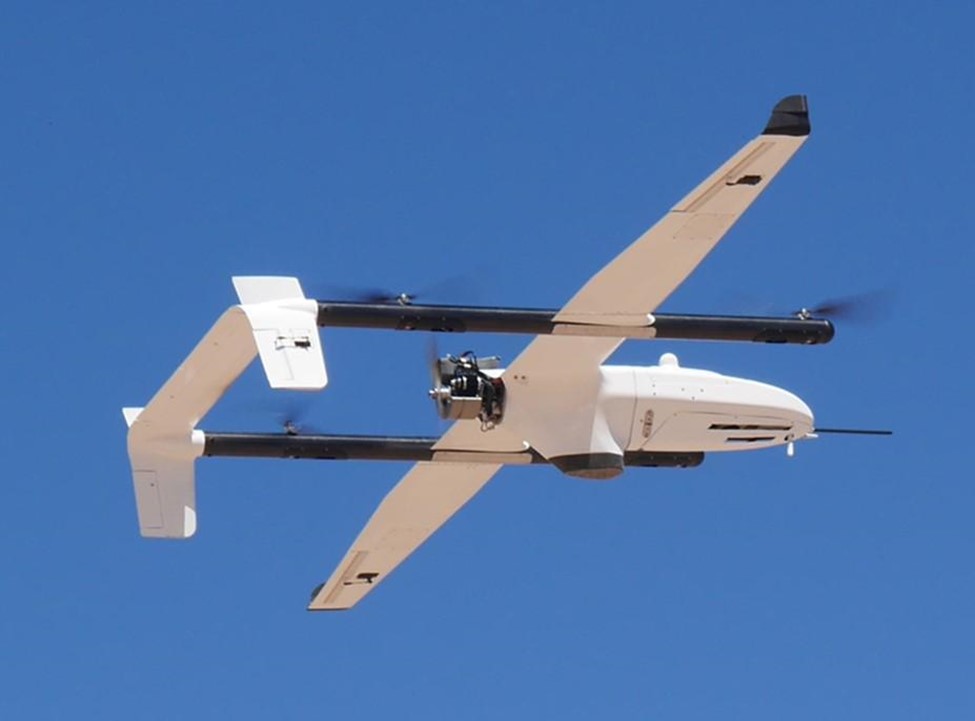Article Provided By: Kenneth Vierra (Cherokee Nation Strategic Programs/UxS Research Transition Office), Patricia Quinn (NOAA/PMEL), Tim Bates (CICOES University of Washington/PMEL), Derek Coffman (NOAA/PMEL)
In 2018, L3Harris (formally Latitude Engineering) was awarded Phase II NOAA Small Business Innovation Research Program (SBIR) funding for the development of the Fixed Wing Vertical Takeoff and Landing (VTOL) Rotator (FVR-55) (Figure 1). NOAA Pacific Marine Environmental Laboratory (PMEL)’s Dr. Patricia Quinn served as the technical point-of-contact for the SBIR. Test flights, including land autonomous take-offs and landings, were completed at the Florence Military Range near Tucson, AZ.

As a continuation of the research, the NOAA Oceanic and Atmospheric Research (OAR) UxS Research Transition Office awarded L3Harris a Phase III follow-on contract for the continued development of the FVR-55. This contract is to support shipboard operations and scientific payload integration on the FVR-55. Flight tests were completed on February 17, 2020 off the M/V Richard L. Becker (Figure 2) out of Fort Lauderdale, FL to demonstrate autonomous takeoff and recovery from a moving vessel at-sea.
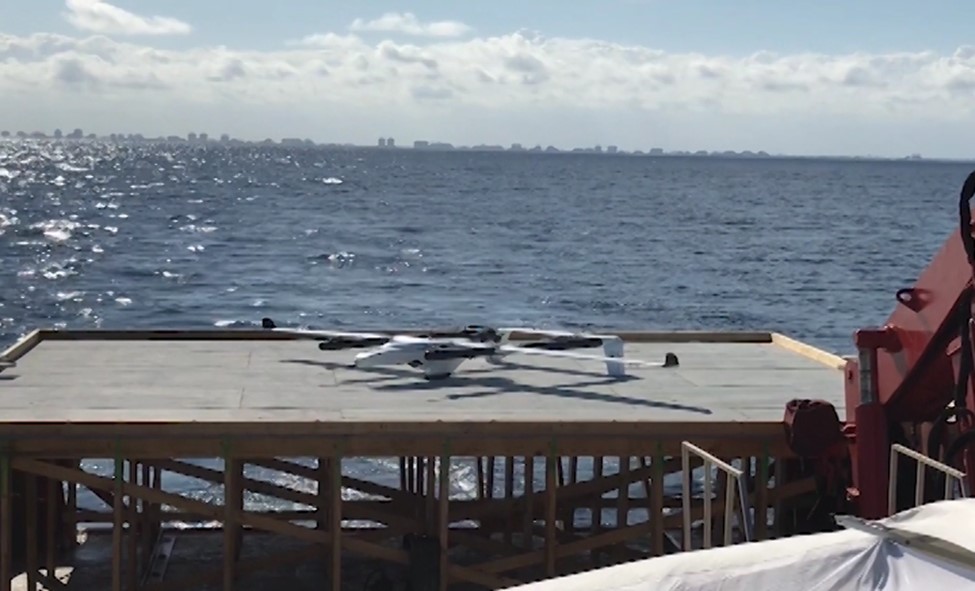

L3Harris completed all objectives and demonstrated fully autonomous flight using Hybrid Quadrotor (HQ) technology from a moving ship with limited deck space. The FVR-55 took off from the ship vertically, switched to fixed wing flight, and returned and landed vertically on the ship autonomously (no external pilot control inputs required).
NOAA PMEL developed two payloads to measure the aerosol and cloud properties required for the observation of aerosol direct radiative effects (Clear Sky payload) and impacts of aerosols on clouds (Cloudy Sky Payload). The Clear Sky payload is designed to measure the direct radiative effect in the atmospheric column up to ~3 km, specifically aerosol optical depth and phase function of scattered light. The Cloudy Sky payload is designed to look at the relationship between aerosol number concentration and particle size below and above the cloud, and cloud droplet number concentration within the cloud.
Scattering and absorption of solar radiation by atmospheric aerosol particles affect Earth’s radiation budget, including cooling at the Earth’s surface. In addition, aerosol particles take up water and form cloud droplets which can increase cloud brightness and lead to a cooling of the Earth’s surface. The degree to which aerosol direct forcing and interactions between aerosols and clouds are cooling the planet and offsetting warming by greenhouse gases is highly uncertain. According to the Intergovernmental Panel on Climate Change (IPCC), climate forcing associated with aerosol-cloud interactions contributes the largest uncertainty to total radiative forcing estimates. Vertical profiles of aerosol and cloud properties are required to improve models and decrease uncertainties, particularly over the ocean due to the susceptibility of marine clouds to small changes in aerosol concentrations.
NOAA PMEL Cloudy and Clear Sky Payloads
The NOAA PMEL team joined the L3Harris staff on March 22-26, 2021 at the L3Harris facility in Tucson, AZ to complete bench testing of the Cloudy and Clear Sky payloads in standalone configurations to verify their functionality.
The Cloudy Sky payload (Figure 3) is made up of three main instruments: a miniature scanning electrical mobility spectrometer (mSEMS), a mixing condensation particle counter (MCPC) and a cloud droplet probe (CDP). Additionally, there is an ambient temperature and relative humidity sensor, an ambient pressure sensor and a GPS. The payload also takes internal measurements of temperature, humidity and pressure.
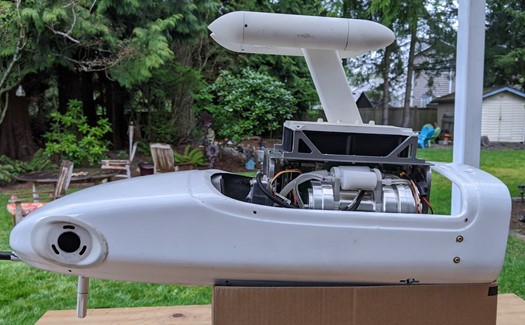

On March 25, 2021 the first and second flights of the Cloudy Sky payload (Figure 4) were successful at the Florence, AZ test flight area. During the test, conditions were very windy with turbulent layers aloft that made it challenging for the plane to ascend. During the first flight, the turbulence persisted up to 4000 feet and then settled down at which point the plane was able to ascend much easier. During the second flight, the turbulence persisted at every level as the winds seemed to be increasing throughout the day. Despite these challenges, the mSEMS seemed to be collecting high-quality data.
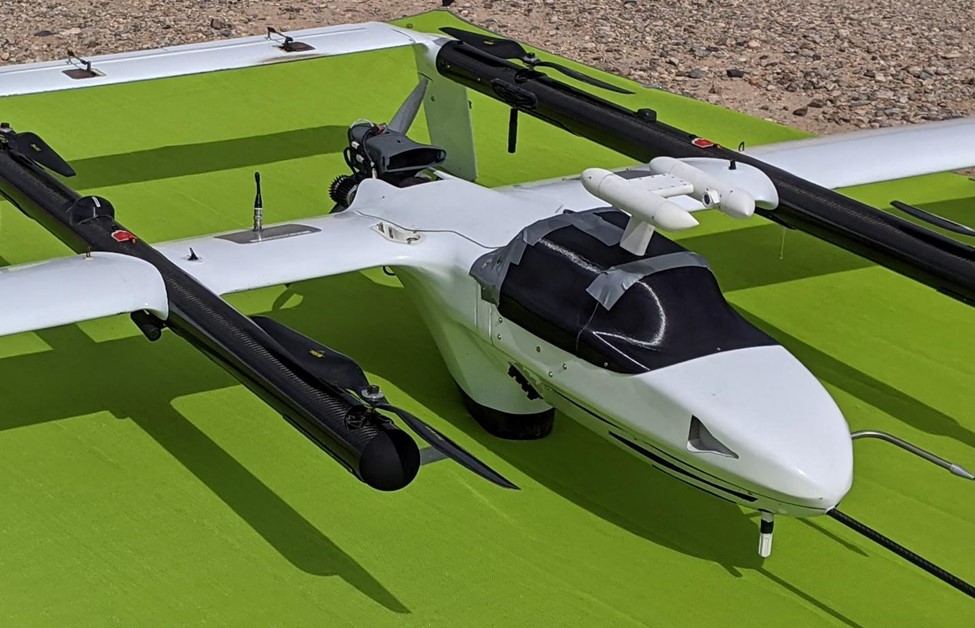

The FVR-55 with the Cloudy Sky Payload performed very well in the highest winds it has ever flown while carrying the new payload (Figure 5). The Clear Sky Payload (Figure 6) is made up of four instruments. A Mixing Condensation Nucleus Counter (MCPC), a 3 wavelength Particle Soot Absorption Photometer (PSAP), a Printed Optical Particle Spectrometer (POPS – Printed referring to its case being made in a 3D printer), and a Scanning Aerosol Sun Photometer (SASP). There is also a temperature and relative humidity (RH) probe that extends into the air stream and a filter carousel for collecting samples for post-flight chemical analysis.
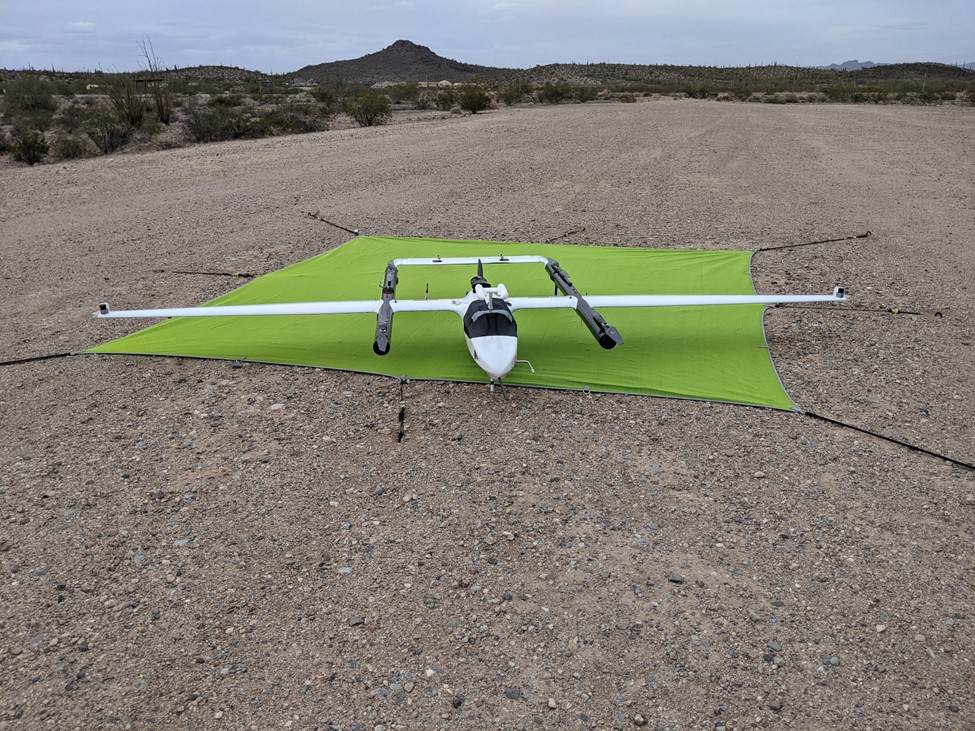

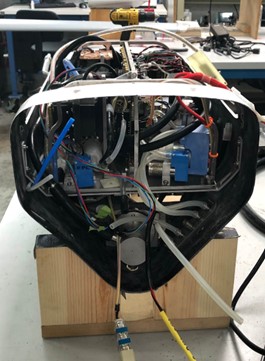

On March 26, 2021 the first and second flights of the Clear Sky payload (Figure 7) were successful. The second, shorter flight served primarily to determine how the plane flew with the addition of the mini-flux payload. During the third flight the Cloudy Sky payload was installed to fly through clouds. The FVR-55 was able to climb much better than the prior day due to a decrease in turbulent conditions aloft. The nominal one hour flight topped out at 8,500 feet before having to descend. All three flights were successful. All issues identified during the week of both bench tests and test flights are being addressed and corrected.


Figure 8 shows some samples of the data collected during the tests. The blue and green traces in Figure 8 are ambient relative humidity (RH) and temperature (T), respectively, each with an ascent and a descent line. Similarly, there are two traces (ascent and descent) for the total particle number concentration (mSEMS integral concentration). The orange trace is the total cloud drop number concentration. High values up to 800 counts at an altitude of 2,500 meters indicate the aircraft flew through a cloud.
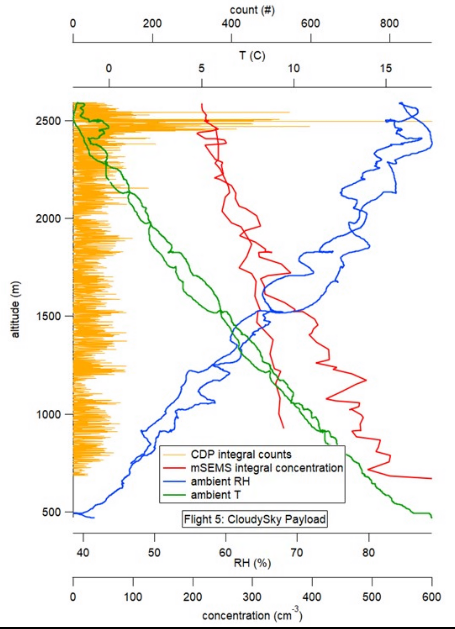

The first plot in Figure 9 shows altitude in feet (black line). The middle plot shows ambient temperature (red line) and relative humidity (RH, light blue line). The bottom plot shows two different measurements of total particle number concentration with the dark blue line being from the Mixing Condensation Particle Counter (MCPC_CN) which measures particles with diameters greater than 8 nm. The green line is from the Printed Optical Particle Spectrometer (POPS) which measures particles with diameters between 140 nm and 3 microns. The difference between the green and blue line indicates the number of particles between 8 and 140 nm, i.e., those particles not detected by the POPS.
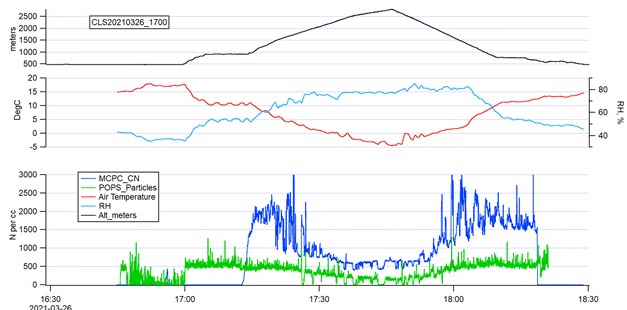

The NOAA UxS Program’s goal is to transition the FVR-55 UAS from research to operations on a NOAA vessel. Initially a NOAA payload will be integrated and flown, but the capability for additional NOAA payloads is planned. L3Harris successfully completed shipboard autonomous launch and recovery of the FVR-55.

